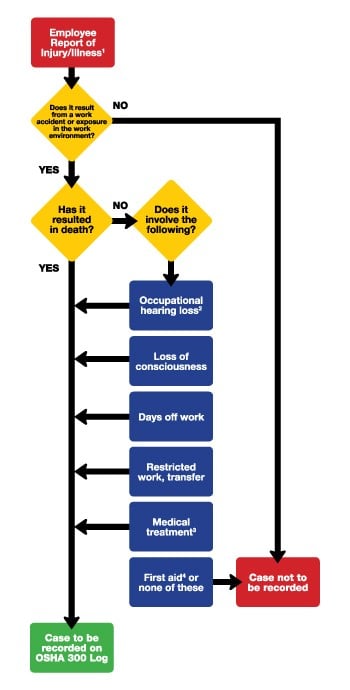Employers are responsible for recording all work-related injuries and illnesses. If you are unable to determine if an injury or illness is recordable after you have completed the investigation, and evaluated all available documents, it is recommended that you contact the OSHA area office nearest you.
Injury or illness recording assumes the individual reporting the injury or illness is an employee of the host employer. If the employee is a temporary employee from a temporary staffing agency, incidents are to be recorded on the host employer 300 log if they provide direct supervision to the injured employee. The temporary staffing agency, on the other hand, would be responsible for reporting Workers’ Compensation claims to the insurance carrier. Keep in mind that recordable injuries or illnesses do not have to be posted on the OSHA 300 log for seven calendar days after the event is reported. Seven days is a reasonable amount of time to evaluate all available information and make an informed decision regarding recordability.
One of the most confusing aspects of OSHA recordkeeping is determining if an injury or illness is recordable based upon the medical treatment. The revised standard sets new definitions of medical treatment and first aid to simplify recording decisions.
Medical Treatment: The management and care of a patient to combat disease or disorder by a licensed healthcare professional. It does not include:
- Visits to practitioners for observation and/or evaluation only
- Diagnostic procedures (e.g., X-Rays, etc.)
- First aid treatment
First Aid: Treatments include, but are not limited to:
- The use of nonprescription medication at nonprescription strength
- Tetanus immunizations
- Cleaning, flushing, or soaking surface wounds
- Use of wound coverings, butterfly bandages, or Steri-Strips
- Hot or cold therapy
- Use of non-rigid means of support
- Temporary immobilization devices used to transport victims
Note: Please keep in mind that other events, or additional criteria, that ensure an injury or illness are recordable include Loss of Consciousness, Medical Removal, Days Away or Restricted Days, Job Transfer, Bloodborne Pathogens, Tuberculosis and Hearing Loss.
Determining OSHA Recordability Flow Chart

Written by Jack Fearing.


